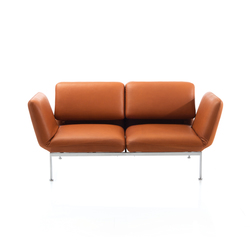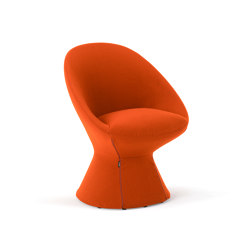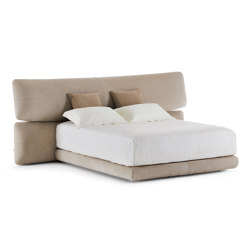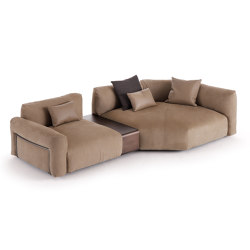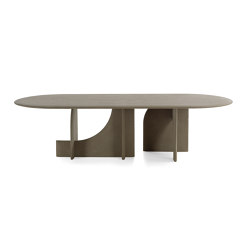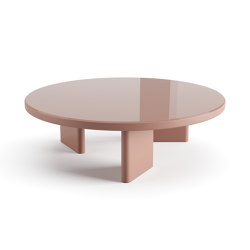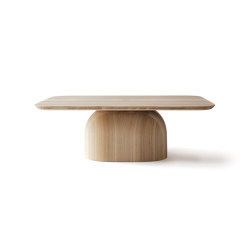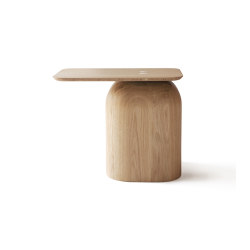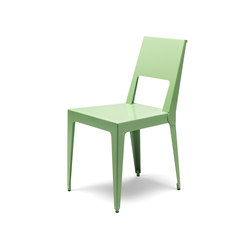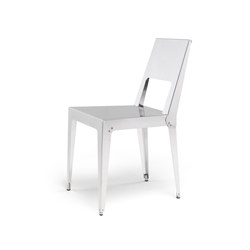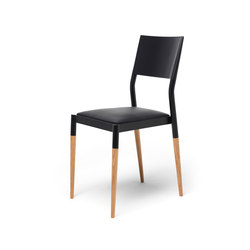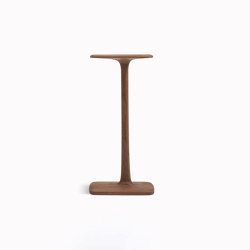À propos de Casimir
EN SAVOIR PLUS SUR CASIMIR
History
Casimir, born in Koersel (Belgium) in 1966, elected to study Industrial Design at the SHIVKV Genk (Belgium). It was never a conscious choice to focus on design. Casimir was looking for a versatile direction that would include theory and technique as well as creativity both in mind and hand. During his training as an Industrial Designer, he discovered that the design of products purely for industry was lost on him: an industrial product is an accumulation of compromises and is rarely an expression of a personal emotion or the personal vision of the designer. During his studies, he designed a number of items of furniture that did give expression to his own vision of design. Later, after he had established himself as a furniture designer, this vision further developed into a personal style.
He won several awards and selections like
Cultural award in 1994 from the Province of Limburg in Belgium
Henry van de Velde-Prize in 2000, awarded by Design Vlaanderen, Belgium
In 2004, Casimir won the most prestige price in Belgium for Architecture and Design ‘The Flemish Culture Price’ for the collections Casimir Meubelen and Vlaemsch(). This price is attributed every 2 years in this category. Other laureates of The Flemish Culture Price are Raf Simons, Martin Margiela, Maarten van Seeveren for Design; Mauro Pawlowski (from Deus) for Music in 2004.
Philosophy
«Why do his objects fascinate? What is the secret of their seduction, or rather, their power to seduce? Their magnetism seems to be related to that innocent, yet irresistible, glance one sometimes gives an emphatic representative of the opposite sex (or possibly the same sex) in an unguarded moment. A glance without consequence, expect perhaps in dream. His objects are not aloof. They lure. And yet at the same time, they withdraw into their own self-willed, self-satisfied, unapproachable Ego. The game of seduction. Modest, reserved, unpretentious as his objects are, they are, at the same time physical, desirous and sensual. That makes them exotic. These objects are not polite or well-brought up or, and much less so, boring or neutral. They fall into two extremes of a spectrum at one and the same time. Their severity, clarity and utilitarianism labels them masculine. Their generosity, susceptibility and intimacy makes them feminine. Each time we try to label them, these objects slip away. They withdraw into their indefinability. So is this furniture: elusive.»
Francis Smets, Philosopher
His style strips his furniture to the essence, to what they were originally designed for; he retreats into the “archetype”. Semiotics, the language of signs and symbols, plays an important role; language as the basis of a culture. His furniture is characterised as heavy, solid and in his view typically Flemish, Burgundian and Gallic. The use of durable and genuine materials and constructions allows time a chance to exercise its influence on the designs. Such materials, in combination with their proportions and dimensions, guarantee their utility. Casimir’s furniture designs are and will remain items of use, working appliances.
«Casimir’s designs are born from a point on the other side of the most extreme border of reduction. At the extreme of simplicity, truth crosses over into criticism. This is why Casimir’s furniture, even its most extreme simplicity, is deviant.»
by Jan Kenis, Cultural Engineer
Casimir’s style is a concept that is for ever in motion, constantly questioning itself: to what extent are archetypes legible: when should one call six planks at a certain attitude to each other a chest and when do these same six planks become a cupboard? To what extent do dimensions influence the semiotics/legibility of a piece of furniture? To what extent can one disconnect image from function: can a chair fitted with a shelf get away as a bedside table? To what extent can one deviate from the traditional use of a piece of furniture: sleeping behind instead of beside each other, or using a cupboard to open a cupboard rather than using a door? To what extent does the material tell the story? Can tough/rustic and refined both be emphasised together at the same time? Such questions ensure constant tension in Casimir’s designs, ensuring that they will continue to grab the beholder’s attention for ever.»
«Forget bondage -– furniture is the new perversion»
by Katy Greaves, Wallpaper
History
Casimir, born in Koersel (Belgium) in 1966, elected to study Industrial Design at the SHIVKV Genk (Belgium). It was never a conscious choice to focus on design. Casimir was looking for a versatile direction that would include theory and technique as well as creativity both in mind and hand. During his training as an Industrial Designer, he discovered that the design of products purely for industry was lost on him: an industrial product is an accumulation of compromises and is rarely an expression of a personal emotion or the personal vision of the designer. During his studies, he designed a number of items of furniture that did give expression to his own vision of design. Later, after he had established himself as a furniture designer, this vision further developed into a personal style.
He won several awards and selections like
Cultural award in 1994 from the Province of Limburg in Belgium
Henry van de Velde-Prize in 2000, awarded by Design Vlaanderen, Belgium
In 2004, Casimir won the most prestige price in Belgium for Architecture and Design ‘The Flemish Culture Price’ for the collections Casimir Meubelen and Vlaemsch(). This price is attributed every 2 years in this category. Other laureates of The Flemish Culture Price are Raf Simons, Martin Margiela, Maarten van Seeveren for Design; Mauro Pawlowski (from Deus) for Music in 2004.
Philosophy
«Why do his objects fascinate? What is the secret of their seduction, or rather, their power to seduce? Their magnetism seems to be related to that innocent, yet irresistible, glance one sometimes gives an emphatic representative of the opposite sex (or possibly the same sex) in an unguarded moment. A glance without consequence, expect perhaps in dream. His objects are not aloof. They lure. And yet at the same time, they withdraw into their own self-willed, self-satisfied, unapproachable Ego. The game of seduction. Modest, reserved, unpretentious as his objects are, they are, at the same time physical, desirous and sensual. That makes them exotic. These objects are not polite or well-brought up or, and much less so, boring or neutral. They fall into two extremes of a spectrum at one and the same time. Their severity, clarity and utilitarianism labels them masculine. Their generosity, susceptibility and intimacy makes them feminine. Each time we try to label them, these objects slip away. They withdraw into their indefinability. So is this furniture: elusive.»
Francis Smets, Philosopher
His style strips his furniture to the essence, to what they were originally designed for; he retreats into the “archetype”. Semiotics, the language of signs and symbols, plays an important role; language as the basis of a culture. His furniture is characterised as heavy, solid and in his view typically Flemish, Burgundian and Gallic. The use of durable and genuine materials and constructions allows time a chance to exercise its influence on the designs. Such materials, in combination with their proportions and dimensions, guarantee their utility. Casimir’s furniture designs are and will remain items of use, working appliances.
«Casimir’s designs are born from a point on the other side of the most extreme border of reduction. At the extreme of simplicity, truth crosses over into criticism. This is why Casimir’s furniture, even its most extreme simplicity, is deviant.»
by Jan Kenis, Cultural Engineer
Casimir’s style is a concept that is for ever in motion, constantly questioning itself: to what extent are archetypes legible: when should one call six planks at a certain attitude to each other a chest and when do these same six planks become a cupboard? To what extent do dimensions influence the semiotics/legibility of a piece of furniture? To what extent can one disconnect image from function: can a chair fitted with a shelf get away as a bedside table? To what extent can one deviate from the traditional use of a piece of furniture: sleeping behind instead of beside each other, or using a cupboard to open a cupboard rather than using a door? To what extent does the material tell the story? Can tough/rustic and refined both be emphasised together at the same time? Such questions ensure constant tension in Casimir’s designs, ensuring that they will continue to grab the beholder’s attention for ever.»
«Forget bondage -– furniture is the new perversion»
by Katy Greaves, Wallpaper
EN SAVOIR PLUS SUR CASIMIR
